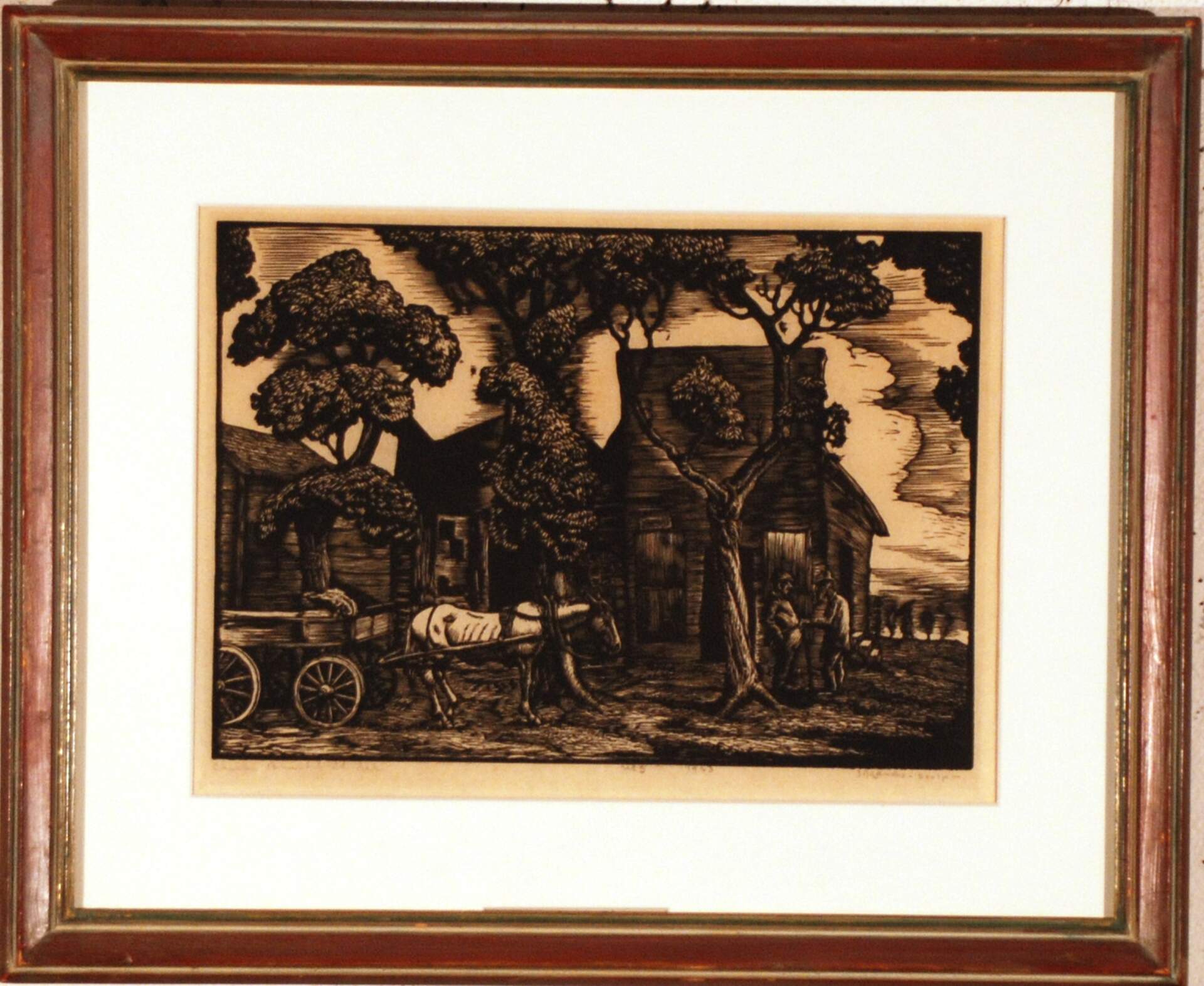Charles E. Burchfield and Julius J. Lankes Carolina Village, originally titled Winesburg, Ohio
1923
wood engraving on paper
7 1/8 x 10 1/8 inches
Burchfield Penney Art Center, Gift of Edward B. Sides in memory of James B. Sides, 1986
Carolina Village features a “false front” building—a style of American architecture that Charles Burchfield depicted in a number of works, including a 1918 watercolor he made at Camden, South Carolina, while serving in the U. S. Army. The subject is also closely related to The False Front (1920-21), a watercolor now in the collection of The Metropolitan Museum of Art. For the latter work, Burchfield had gone to Negley, Ohio, sixteen miles southeast of Salem, to sketch dilapidated stores. He thought its old buildings had a “quaint romantic flavor” and the friendly inhabitants, whose conversations he overheard, charmed him. Both the painting and the print called Carolina Village feature a false-front building, two older men in conversation, and a horse-drawn vehicle.
The print was originally titled Winesburg, Ohio, in homage to Sherwood Anderson’s book, which Burchfield read and admired in 1919. He allowed the title to be changed to Carolina Village after New York art critic Henry McBride accused him of producing sarcastic, hateful paintings of Salem, Ohio, to which its residents objected to the unfavorable light cast on their hometown. Comparing him to Jonathan Swift in a review of Burchfield’s exhibition at the Kevorkian Galleries in 1920, McBride wrote: “There is almost nothing in his work but this hatred, and if he lived to be sixty he could not be a more vehement hater.” In contrast, Mary Mowbray-Clarke, who represented Burchfield’s work in her Sunwise Turn Bookshop in Manhattan, expressed a more favorable impression: “Burchfield is one more youth of the new age, with power whose privilege it is to show us our insincerities and sentimentalities while never looking at us at all, only at the world we gave him to grow up in.”
Burchfield publicly denied any malicious intentions, but privately defended his critique of small town life in a letter to his printmaking partner, J. J. Lankes, who had carved and printed the wood engraving that Burchfield drew. In 1927 he wrote: “No doubt I have done some ‘acrid, bitter’ stuff. I certainly have felt that way about certain phases of American Life & tried to tell the world about it. That I have done things out of pure love for the subject or pure good spirits seems to escape the critics. Not that I would apologize for my pictures of hate. Hate is just as legitimate an emotion as any other. In fact I think that the bitter emotions always produce more ‘gutsy’ stuff. Where would Beethoven have been without his affliction?” --NW
